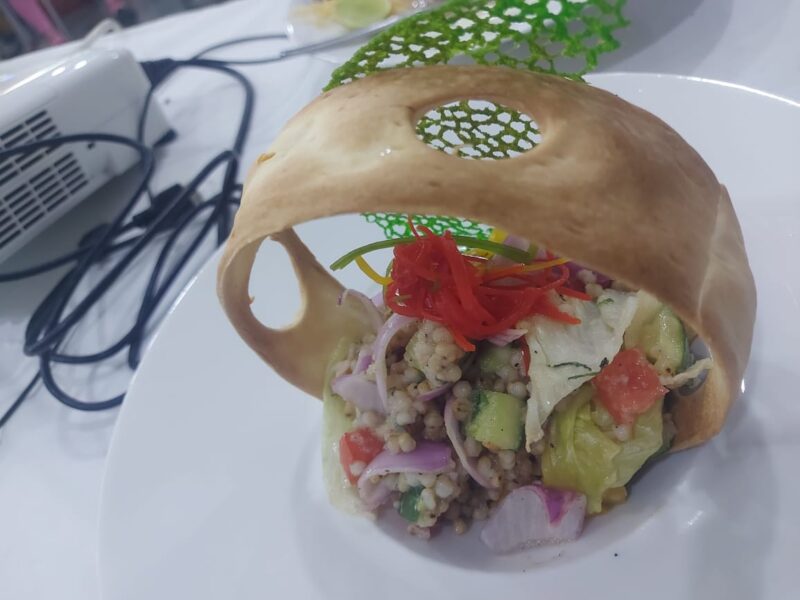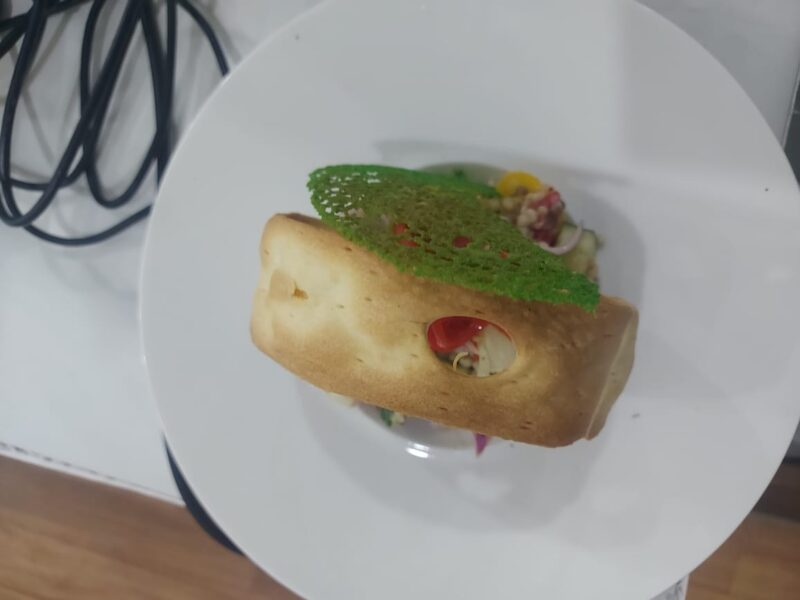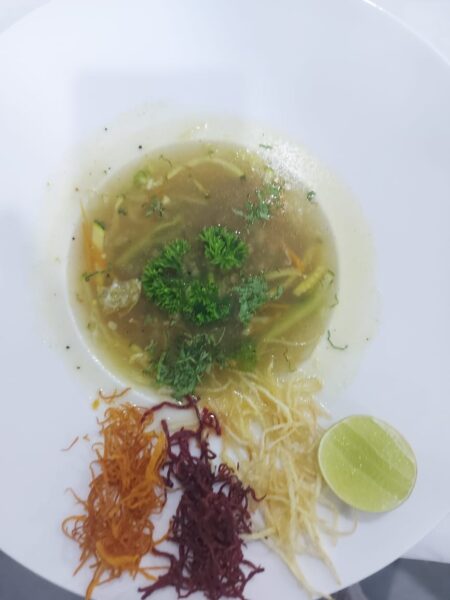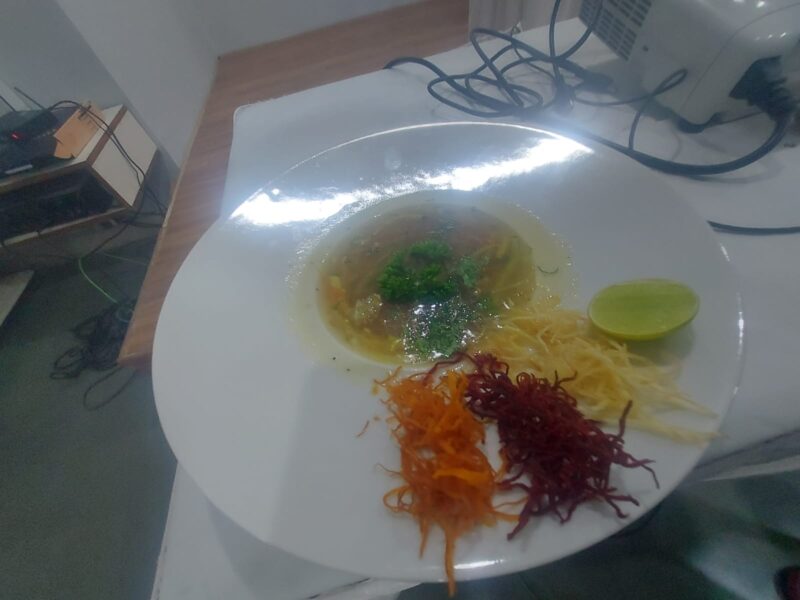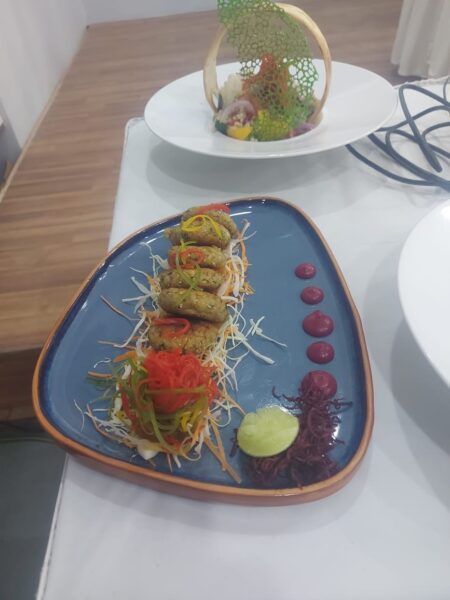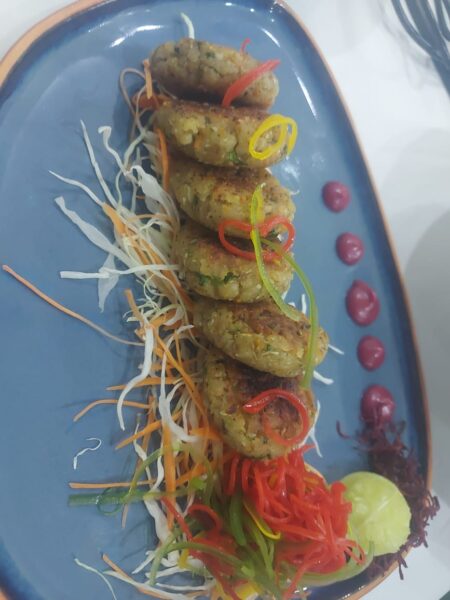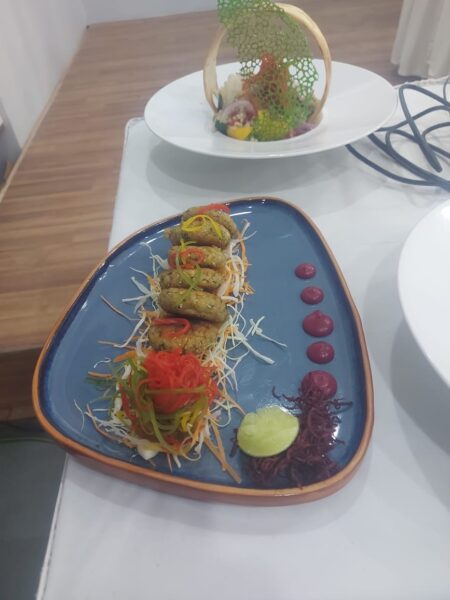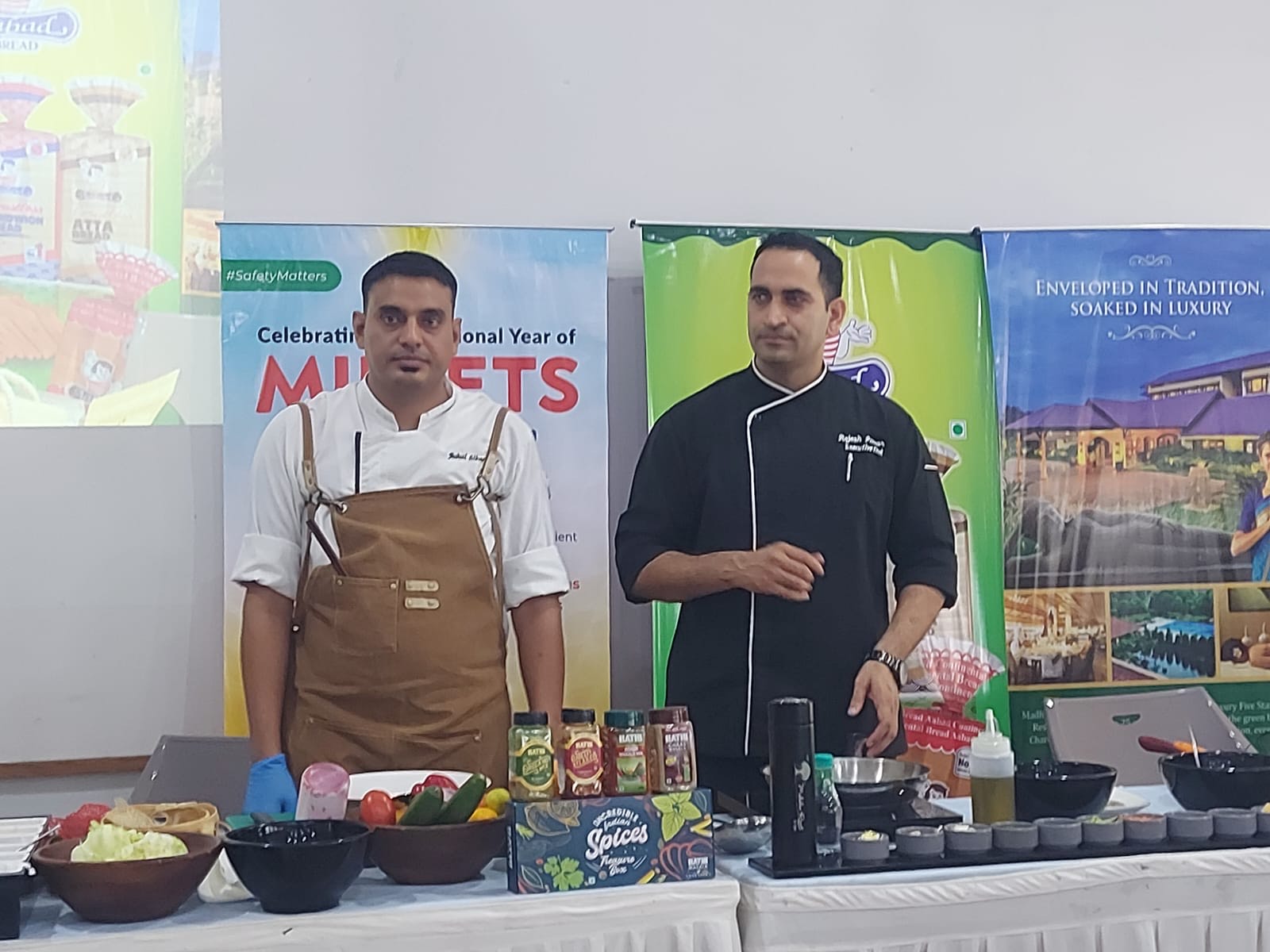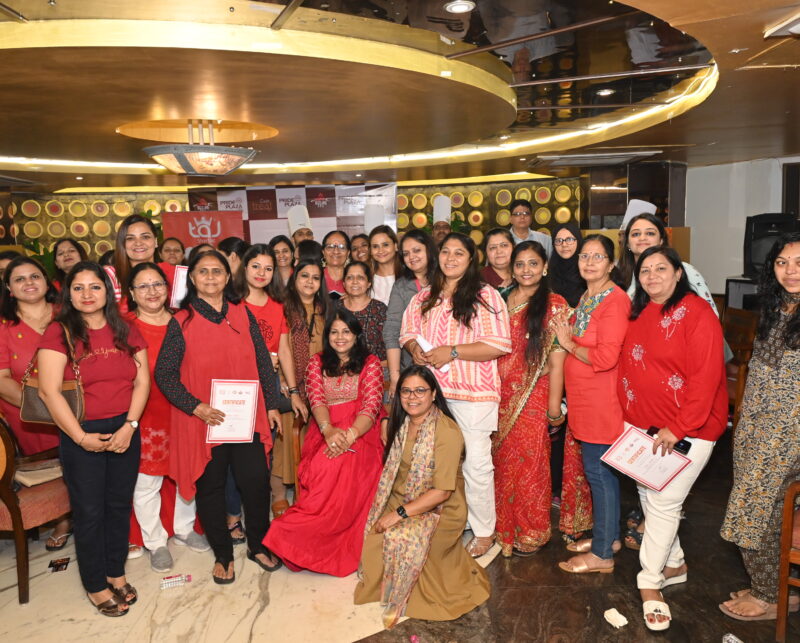IFEA and SNS organized a clean, green and healthy food workshop for home cooks at the multipurpose hall of the Ahmedabad Management Association.
Chef Rajesh Pawar of Madhubhan Resort & Spa taught recipes using millets. He started the workshop by introducing the benefits of millets,
Millets – the Nutricereals
What is Pearl Millet (BAJRA)?
Pearl Millet, commonly known as bajra is a profoundly nutritious and easy to digest cereal grain. Being non-glutinous makes it a healthy option for people with a gluten allergy and celiac disease. They are power-packed with carbohydrates, essential amino acids, antioxidants, multiple vitamins like thiamine, riboflavin, folic acid, niacin, beta carotene, and minerals like iron, phosphorus, magnesium, and zinc.
Nutritional Health Benefits of Pearl Millet
1. Good for diabetic diet – Pearl millets contain carbohydrates that are digested slowly and maintain a stable glucose level for a long period. This makes them a healthy food option for diabetics.
2. Beneficial for heart health – Rich in dietary fibres and cholesterol-lowering properties of these grains are good for heart patients.
3. Perfect for Celiac disease and gluten intolerance – patients with celiac disease and gluten intolerance can opt for a pearl millet-based diet as it is gluten-free and easily tolerated by everyone
4. Therapeutic for people with frequent acidity and stomach ulcers – Pearl millets are one of the few foods which reduce the acidity of the stomach thereby limiting ulcer formation and discomfort due to frequent bouts of acidity.
5. Prevents Constipation- Benefits of bajra include promoting good gut health. In simpler terms, consuming the pearl millets will make sure you keep constipation at a distance. The reason behind this is the presence of insoluble fibre in bajra.
6. Provides protein to vegetarians- Those who are vegetarians cannot get the needed protein from meat and fish products. This is where pearl millets come in. The health benefits of bajrainclude its ability to provide the required protein to vegetarians as well. Bajra flour becomes complete when it is combined with seeds like rajma, moong dal, chana dal, etc.
7. Lowers Blood pressure- Bajra is known for its richness in potassium which is needed for those with high blood pressure. Consuming more foods rich in potassium will help flush out sodium from your body, which in turn will reduce blood pressure.
8. Makes bone stronger – The high phosphorus content of bajra helps in making your bones stronger.
9. Helps in relieving constipation – A good amount of dietary fibres aid in the bulk formation and provide relief from constipation.
10. Lowers cholesterol- Pearl millets contain an adequate amount of good fat which is the desired quality of food for high cholesterol patients.
11. Nutritious baby food – Pearl millets are easily digested and well tolerated by little ones which make them a mandatory ingredient for baby food preparations during the weaning period and even later on.
12. Rich in antioxidants – Lessens free radical damage in the body and prevents early ageing, Alzheimer’s Disease, Parkinson’s Disease, cardiovascular diseases, and aids in wound healing.
13. Ideal for weight management and obesity.
14. Reduces the risk of colon cancers – It makes the stomach pH alkaline, and thus reduces the risk of colon cancers.
15. A healthy choice of food for pregnant women and nursing mothers due to iron and folic acid contents.
Jowar (Sorghum) – Benefits, Nutrition Value, & Recipes
Jowar is globally known as the “new quinoa” for its gluten-free and whole-grain goodness. It goes by the name of Sorghum in English. In India, jowar is a staple food item.
Since it is a member of the millet family, jowar is gaining massive attention these days. It is an ancient grain whose popularity was shadowed by wheat and rice.
12 Health Benefits of Jowar
The high nutrient composition of jowar makes it a desirable grain when it comes to good health. Here are some of the several benefits of this whole grain:
1. Gluten-free
Gluten is a protein component found in wheat and barley-based foods. It causes digestive problems such as bloating, pain, and stomach cramps. Jowar, a gluten-free whole grain, is considered an excellent alternative for people who suffer from ‘gluten intolerance’.
2. Jowar Rich in Fiber
Compared to other cereal grains like barley or rice, jowar contains a much higher concentration of fibre. A single serving contains over 12 grams, which is almost half the recommended daily intake for fibre. A high-fibre diet lowers the risk of obesity, stroke, high blood pressure, cardiac disease, diabetes, and digestive problems.
3. Jowar Controls Blood Sugar Levels
Jowar is a complex carbohydrate that digests slowly. As a result, it leads to stable blood sugar levels. Hence, it is a great diet choice for diabetics and people who want to lose weight.
4. Jowar High in Protein
100 grams of Jowar provides 11 grams of protein, which supplies the body with energy and aids in cell regeneration.
5. Full of Iron
Jowar contains 8.45 mg of iron in every cup. Since the iron in jowar is non-heme (difficult to absorb), pairing it with a source of Vitamin C will give you the maximum benefit.
6. Jowar Good for Bone Health
Because it contains high magnesium levels, jowarhelps maintain calcium levels in the body (magnesium increases calcium absorption).
7. Packed with Vitamins, Minerals, and Micronutrients
It contains B vitamins, which help the body build new tissues and cells and potassium and phosphorus. Additionally, Jowar contains traces of zinc, copper, and over 20 micronutrients and high levels of antioxidants.
8. Jowar Helps Weight Loss
Jowar has a much higher concentration of dietary fibre when compared to other cereal grains. This high fibre content ensures higher satiety levels, lowering consumption by keeping hunger pangs at bay.
Therefore, the fibre content in Jowar reduces your appetite, making it the ideal whole grain option for weight loss.
9. Jowar Improves Digestive System
The high dietary fibre content in Jowar also helps improve digestion. The fibre is a bulking agent that helps stool pass smoothly through the digestive tract. The whole grain helps improve digestive health and helps to treat conditions like diarrhoea, bloating, stomach ache and constipation.
10. Jowar Improves Heart Health
The abundance of fibre in jowar helps lower LDL (or bad cholesterol) levels in the body, thus reducing the risk of a heart attack. The cholesterol-lowering properties of jowar also reduce the chances of hindered blood flow, arteriosclerosis and plaque formation.
The whole grain also contains antioxidants, apart from nutrients like magnesium, iron, and vitamins B and E. As a result, it helps avoid several cardiovascular conditions. Jowar also helps regulate plasma LDL cholesterol concentration while improving the HDL levels in the body.
11. Jowar Improves Energy Levels
Sorghum contains high amounts of niacin (or Vitamin B3). The B vitamin is integral in transforming food into energy usable by the body.
Niacin ensures that the energy levels in the body are consistent throughout the day rather than observing sudden spikes of energy. A rich source of niacin, a single serving of Jowar accounts for 28% of the recommended daily intake.
12. Jowar Boosts Blood Circulation
Iron and copper are two essential minerals found in Jowar. These minerals come together to play a vital role in improving the body’s blood circulation.
Iron is crucial to developing red blood cells in the body, while copper helps enhance iron absorption in the body. Thus, consuming the grain helps improve the development of red blood cells.
It also improves the overall circulation of blood in the body while reducing the chances of anaemia. A single serving of Jowar can give you 58% of your daily recommended intake of copper.
Madhubhan Resort’s
Millet Magic Recipes
1. Burnt Garlic Pearl Millet Soup with Exotic Vegies
| Ingredients | Qt |
| Pearl Millet | 20gm |
| Broccoli | 15gm |
| Carrot | 15gm |
| Spinach | 15gm |
| Cabbage | 15gm |
| Zucchini | 15gm |
| Salt | 3gm to Taste |
| Pepper | 2gm |
| Chopped Garlic | 5gm |
Cooking Method
1. First boil the pearl millets separately till well done
2. Now cut into fine juliennes of all fresh vegetable
3. Now take a sauce pan and add water in it and boil
4. Add boiled pearl millets and all cut vegetables in pan.
5. Add seasonings with salt pepper according to taste.
6. Serve hot and garnish with lemon and coriander sprig garnish.
2. Sorghum (JOWAR) with Lemon Dressing
| Ingredients | Qt |
| Sorghum (JOWAR) | 20gm |
| Onion | 15gm |
| Cucumber | 15gm |
| Tomato | 15gm |
| Bell Pepper | 15gm |
| Apple | 20gm |
| Pomegranate | 20gm |
| Green Chilly | 5gm |
| Green Coriander | 5gm |
| Salt | 3gm to Taste |
| Pepper | 2gm |
| Lemon | 1 no |
| Olive Oil | 10ml |
Cooking Method
1. First boil the Sorghum jowar separately till well done
2. Cut all vegetables in small cubes.
3. Now take a mixing bowl.
4. Add boiled pearl millets and all cut vegetables in bowl.
5. Add Oil and lemon juice in salad bowl.
6. Add seasonings with salt pepper according to taste.
7. Serve in plates with lemon wedges garnish.
3. Pearl Millet and Foxtel millet Tawa Kebab
| Ingredients | Qt |
| Pearl Millet | 30gm |
| Foxtail Millet | 30gm |
| Boiled potato | 30gm |
| Roasted gram flour | 20gm |
| Onion | 15gm |
| Cabbage | 15gm |
| Carrot | 15gm |
| Ginger | 20gm |
| Garlic | 20gm |
| Green Chilly | 5gm |
| Green Coriander | 5gm |
| Salt | 3gm to Taste |
| Jeera Powder | 2gm |
| Lemon | 1 no |
| Deshi ghee for pan fried | 10ml |
Cooking Method
1. First boil Foxtail and pearl millet and keep aside.
2. Roughly chopped all the vegetables.
3. Take 1 spoon ghee in fry pan and add ginger garlic, green chili and sauté them.
4. One done add chopped vegetable and boiled millets and cook till done.
5. Add 1 table spoon roasted chana powder and add seasoning and all dry masala and cook.
6. Then put mixture in a plate let it will cool and make a small size tikki.
7. Take a thick bottomed griddle and put some ghee and put tikkis and cook till golden brown color.
8. Arrange in a plate and serve with mint sauce of tomato ketchup.
Chef Avinash Singh of IIHM taught zero-waste kitchen practices and recipes.
Jitendra Singh, executive chef of Bigly, talked about vegan bowl recipes.



